Reading Time: 8 minutes approx.
PAKISTAN Finalized CHINESE KLJ-7 AESA Radar For Initial Batch Of JF-17 Block-III Aircraft:
PAKISTAN Aeronautical Complex (PAF) and Chengdu Aerospace Corporation (CAC) have reportedly decided to install the CHINESE KLJ-7 Active Electronically Scanned Array (AESA) Radar for the initial batch of PAKISTAN’s indigenous 4.5++ Generation JF-17 Thunder Block-III Aircraft.
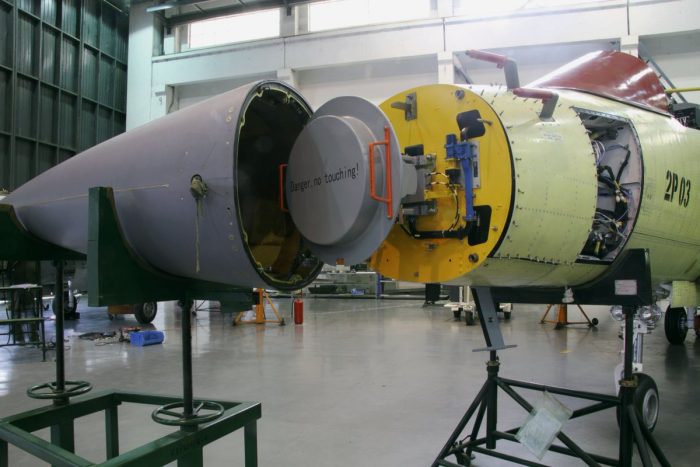
Earlier, PAKISTAN Aeronautical Complex (PAC) Kamra and Chengdu Aerospace Corporation (CAC) have shortlisted the three different variants of Active Electronically Scanned Array (AESA) Radar systems for the Block-III variant of JF-17s. These three variants of AESA Radar included,
-
The KLJ-7 AESA radar, Developed by the Nanjing Research Institute of Electronic Technology (NRIET)
-
LKF601E Air Cooling Airborne AESA radar, Developed by the Leihua Electronic Technology Research Institute’s (LETRI)
-
Leonardo’s Grifo-E AESA Radar, Developed by the Italian Defense Giant Leonardo
Now, reports from reliable sources are confirming that both PAC & CAC have finalized the CHINESE KLJ-7 Active Electronically Scanned Array (AESA) Radar for the initial batch of JF-17 Thunder aircraft.
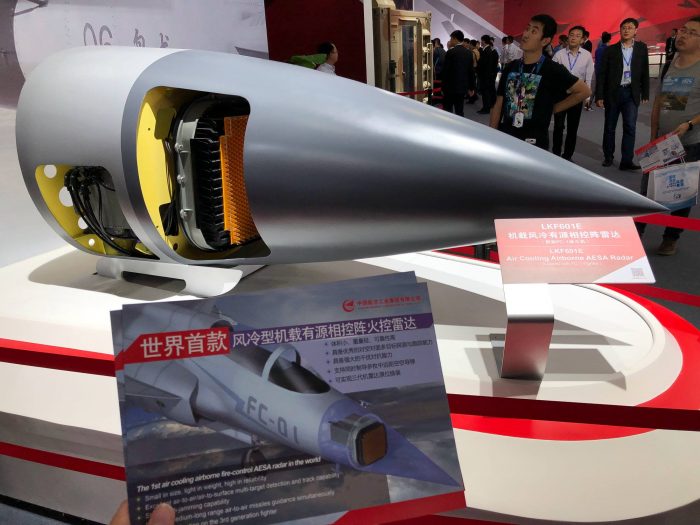
CHINESE KLJ-7 Active Electronically Scanned Array (AESA) Radar:
The CHINESE KLJ-7 AESA Radar, also referred as Type 1478 Radar, is basically an X-Band Airborne Fire-Control Radar (FCR), which is designed and developed by the China’s State Owned Nanjing Research Institute of Electronic Technology (NRIET).
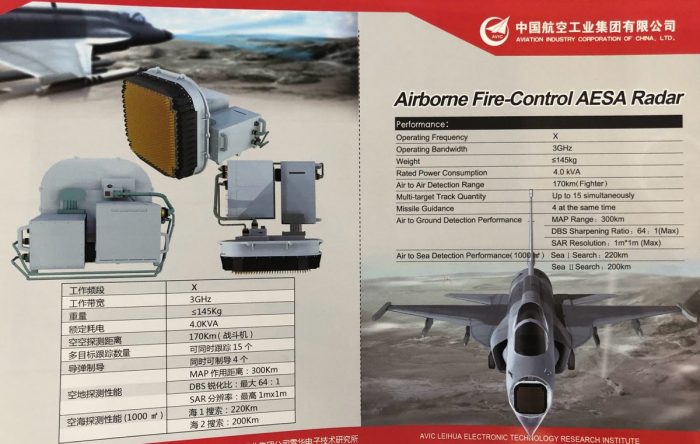
The KLJ-7 AESA Radar is a state of the art and revolutionary Active Electronically Scanned Array (AESA) Radar that uses a mechanically-steered Planar Array Antenna for scanning the coordinates.
The KLJ-7 AESA Radar is multi-functional radar and it is capable to support multiple modes, including the ground surveillance modes, close-in-air-to-air modes and Beyond Visual Range (BVR) Mode.
For JF-17 Thunder Upgradeshttps://t.co/PhTsrIAYf8 pic.twitter.com/H1tgYRNkQr
— PAF Falcons (@PAF_Falcons) January 11, 2020
One of the distinctive feature of the KLJ-7 AESA Radar is that it also supports the anti-jamming capability that help the aircraft to bypass the radar, communication and signal jamming initiated by enemy radar and air defense systems.
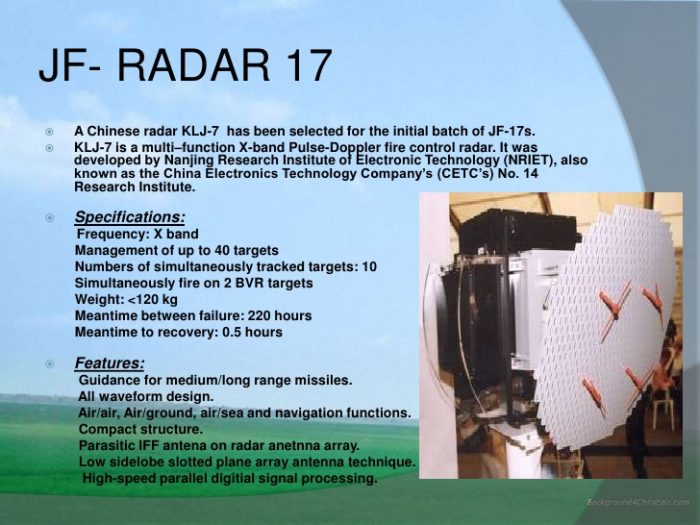
As far as the tracking a feature of the KLJ-7 AESA Radar is concerned, the KLJ-7 can reportedly manage and track up to 50 targets simultaneously. Among the 40 tracked 40 targets, the KLJ-7 AESA Radar can track up to 10 targets in Target-While Scan (TWS) Modes, and it can initiate fire on two Beyond Visual Range (BVR) Targets simultaneously.
The KLJ-7 AESA Radar features the Air to Ground detection range up to 300 Kilometers, Air to Sea Detection Performance with Sea Search I Mode up to 220 Kilometers and Sea Search Mode II with 200 Kilometers. While, the KLJ-7 AESA Radar can also track and monitor the surface targets up to 135 Kilometers in total.
As far as the weaponry of the KLJ-7 AESA Radar is concerned; the CHINESE KLJ-7 AESA Radar support wide-range of lethal air to air, air to ground, air to sea, cruise missiles and it also support the BVR missiles, including the PL-12 (SD-10) Beyond Visual Range (BVR) Missile, PL-9C Short-Range Missiles.
The KLJ-7 AESA Radar features two different Scanned Versions, one with 2 lateral antenna arrays and on frontal antenna and another by using mechanically-steered Planar Array Antenna.
Earlier in 2010, the then PAKISTAN AIR CHIEF Air Marshal Rao Qamar Suleman announced that PAKISTAN will built the KLJ-7 AESA Radar at PAKISTAN Aeronautical Complex (PAC) Kamra.
It is worth noting that PAKISTAN has announced 10 years before that PAC Kamra will manufacture KLJ-7 Active Electronically Scanned Array (AESA) Radar at state owned Aircraft Manufacturing Facility known as PAKISTAN Aeronautical Complex (PAC) Kamra.
It might be one of the reasons that PAKISTAN and CHINA have approved the CHINESE KLJ-7 might for the initial batch of JF-17 Block-III.
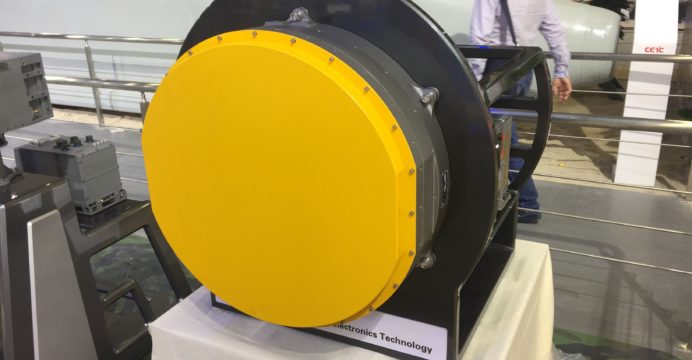
PAKISTAN Aeronautical Complex (PAC) Kamra is producing 58 Percent of the JF-17 Thunder Aircraft Block-III parts in the country, while the remaining 42 percent is produced by the Chengdu Aerospace Corporation (CAC).
It means that if PAKISTAN go ahead with CHINESE KLJ-7 AESA Radar, then it will also retain the capability of domestic and indgenously manufacturing the JF-17 Aircraft in the Sacred Country PAKISTAN.
An officer of PAKISTAN Aeronautical Complex (PAC) Kamra has revealed that PAKISTAN AIR FORCE pilots have flown the JF-17 Thunder Aircraft with the other latest radar systems as UK’s Thales RC400 Radar. However, the PAF Pilots, Scientists, Engineers and Technicians have found that the CHINESE Variant of KLJ-7 AESA Radar is more capable and efficient than its contemporary analogues.
PAKISTAN AIR FORCE (PAF) CHIEF Air Marshal Mujahid Anwar Khan has previously announced that PAKISTAN is expected the operationally deploy the 4.5++ Generation JF-17 Thunder Block-III Aircraft in the fleet during the years of 2020.
Defense Analysts are claiming that as PAKISTAN has perhaps finalize the design and manufacturing of KLJ-7 AESA Radar at PAC Kamra and the recent indications are showing that PAKISTAN has already started the mass production of KLJ-7 AESA Radar in the facility, which is a good sign for PAKISTAN in attaining the goal self-sufficiency and self-reliance in the Defense sector.
Radar Modes of KLJ-7 Active Electronically Scanned Array (AESA) Radar):
-
Air Combat Modes (ACM) (With 5 Sub-modes)
-
Air To Ground Ranging (AGR)
-
Dual Target Track (DTT)
-
Track While Scan (TWS)
-
Range While Search (RWS)
-
Doppler Beam Sharpening (DBS)
-
Real Beam Map (RBM)
-
Single Target Track (STT)
-
Situational Awareness Mode (SAM)
-
Beacon (BCN)
-
Synthetic Aperture Radar (SAR)
-
Sea Single Target Track (SSTT)
-
Ground Moving Target Indication / Ground Moving Target Track (GMTI/GMTT)
-
Velocity Search (VS)
Technical Specifications of the KLJ-7 Active Electronically Scanned Array (AESA) Radar):
-
Frequency Band: X Band
-
Operation Bandwidth: 3 GHz
-
Navigation Systems: Air/Sea, Air/Ground and Air/Air Navigation Systems
-
Guidance for Missiles: Guidance for Long, Medium and Short Range Missiles
-
Missile Guidance Engagement System: up to 4 Targets at the same Time
-
Tracking Targets Support: 40 Targets
-
Air To Air Detection Range: 170 Kilometers (Fighter)
-
Multi-Target Track Quantity: Up to 15 Targets Simultaneously
-
Simultaneously Tracked Targets: 10 Targets Simultaneously
-
Beyond Visual Range (BVR) Targets Support: 2 BVR Targets Simultaneously
-
Meantime Between Failure: 220 Hours
-
Meantime To Recovery: 0.5 Hours
-
IFF Antenna: Parasitic
-
Related Power Consumption: 4.0 KVA
-
Air To Ground Detection Performance: MAP Range: 300 Kilometer
-
DBS Sharpening Ratio: 64:1 (Max)
-
SAR Resolution: 1m x 1 m (Max)
-
Air To Sea Detection Performance Mode 1: Sea Search-I 220 Kilometers
-
Air To Sea Detection Performance Mode 2: Sea Search-II 200 Kilometers
-
Total Weight of KLJ-7 Radar: <120 Kilograms in total
-
Volume: 0.065 m3

















